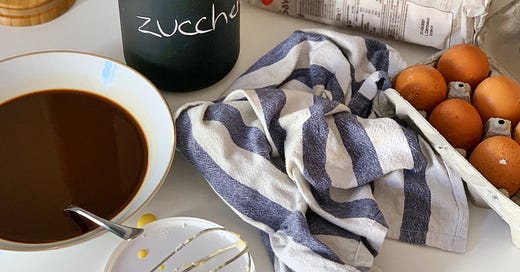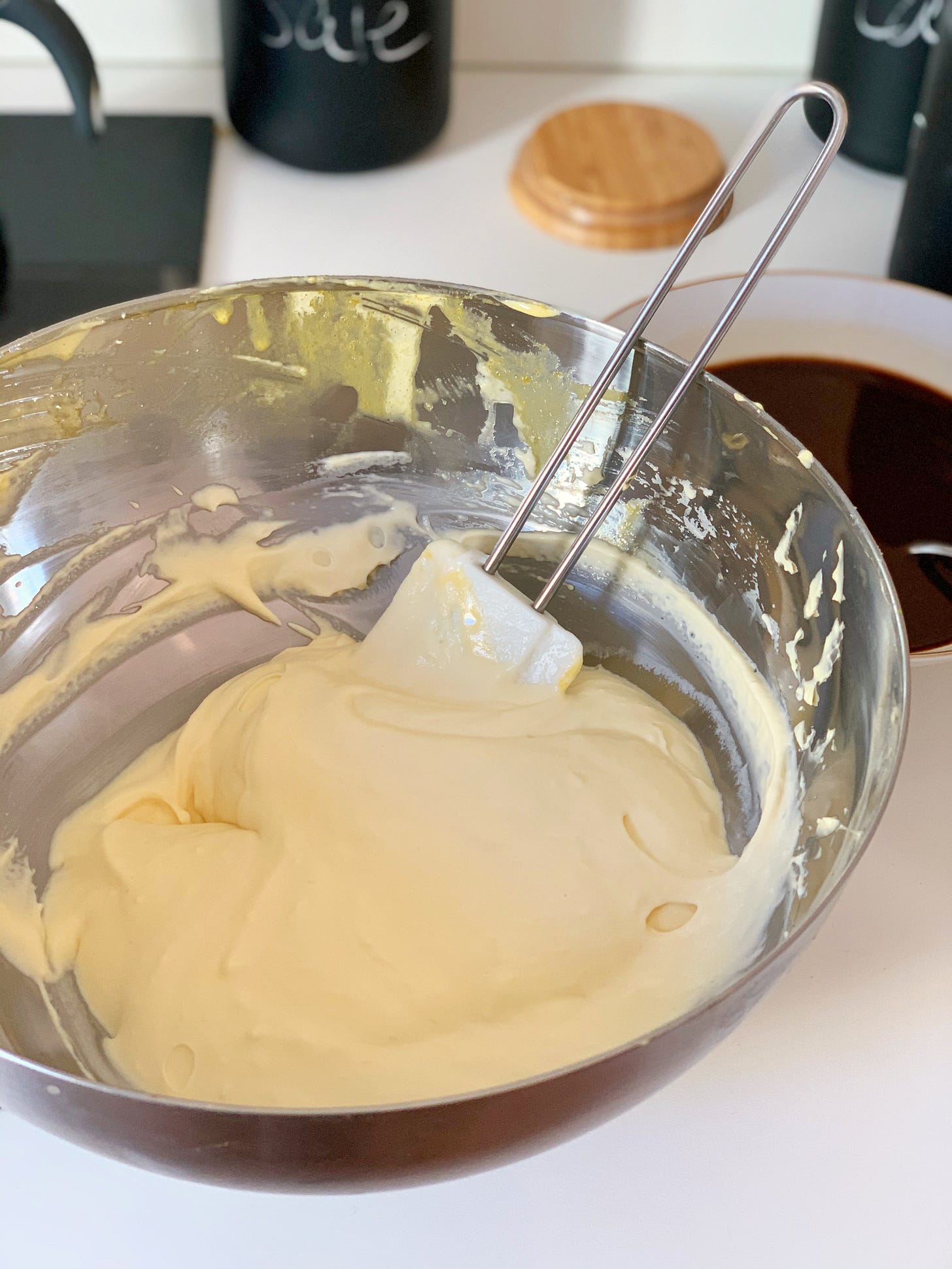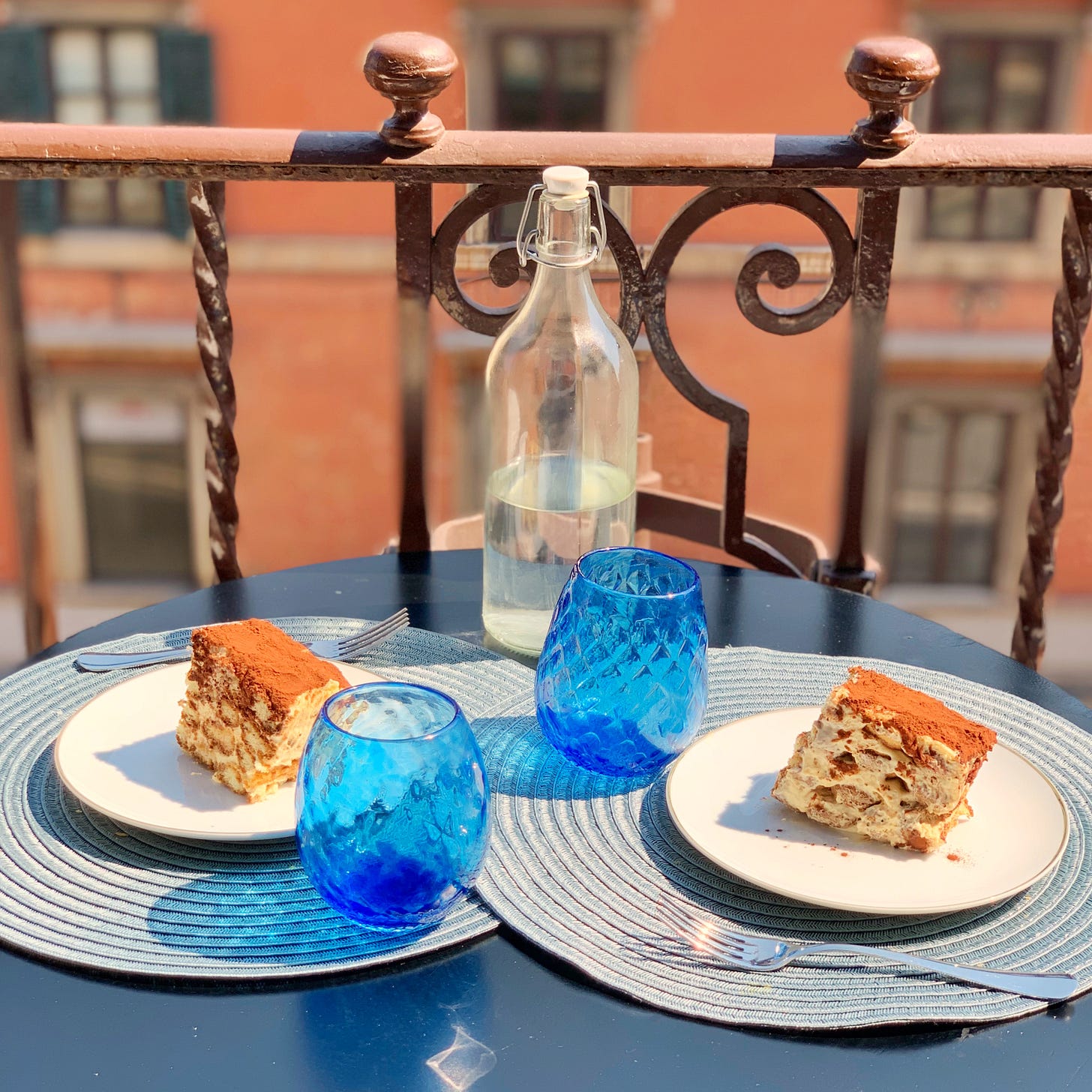Served all over the world, tiramisù might be the most ubiquitous Italian dessert. A simple yet delicious combination of ladyfingers soaked in espresso, layered with mascarpone folded into eggs beaten with sugar, and topped with a dusting of cacao, it shows up on menus all over Italy and beyond. No one knows for sure when or where it originated—both Veneto and Friuli Venezia Giulia claim to be the region where it was invented. The first written recipe didn’t appear until the latter half of the 20th century, but the dessert may actually be much older.
One legend says that it was created in the 19th century by a madam who ran a brothel in Treviso in order to reinvigorate her clients at the end of the evening. Supposedly, the recipe wasn’t recorded until after World War II because of these salacious origins. The word tiramisù is an Italianization of “tireme su,” which means “pick me up” in the Treviso dialect. It has been on the menu at Le Beccherie in Treviso—sometimes credited with its invention—since 1972.
This story is contested by the region of Friuli Venezia Giulia, which claims that the recipe was first recorded in 1959 by Norma Pielli, who served the dessert to hikers staying at her inn in the Alpine town of Tolmezzo. In 2017, the Italian government seemingly validated this theory by declaring tiramisù a prodotto agroalimentare tradizionale (traditional gastronomic specialty) of Friuli.
Yet another version of the story claims that Ado Campeol, owner of Le Beccherie, adapted the recipe for a dessert called coppa imperiale served in a goblet that was created by Speranza Garatti in the early 1960s.
Wherever it comes from, tiramisù has transcended its origins. There are countless variations, featuring everything from nutella to matcha. When I go out to eat in Italy, tiramisù is my go-to dessert order. I feel you can judge a restaurant by its tiramisù. The mascarpone should be light and creamy, the ladyfingers properly soaked in espresso, and the whole thing should be substantial, not soupy. I find it so disappointing when I order it and the lady fingers are dry. But of course, if you ask Italians where to find the best tiramisù, they often say “a casa.”
Every now and then I make it at home, the traditional way. I’m not against the creative variations, but when it comes to making it, I’m a bit of a purist. It’s the perfect dessert to serve at a dinner party because you can make it in advance, stick it in the fridge, and forget about it until it’s time to serve dessert. In fact, you have to make it in advance because it needs a few hours in the fridge in order to set properly. Here’s the recipe I use, adapted from Giallo Zafferano.
Tiramisù
Serves 6-8
Ingredients:
750 grams (about 26.5 ounces) mascarpone
250 grams (about 8.8 ounces) lady fingers
6-9 shots espresso
5 eggs
120 grams (about 4.2 ounces) sugar
Unsweetened cacao powder
Directions:
Start by preparing the espresso. I have a small moka pot, so I typically need to make 2-3 batches of espresso. Add a teaspoon of sugar and set it aside in a bowl so it cools. Then separate the egg yolks from the whites. It’s important to use fresh, good quality eggs since they won’t be cooked. Make sure you don’t get any traces of yolk in the egg whites or they won’t rise correctly.
Add half the sugar to the yolks and beat them with an electric beater until you get a frothy, pale yellow substance. Then start to add the mascarpone bit by bit, beating with the electric beater until you have a dense sort of cream. Set it aside and wash the beaters.
In a separate bowl, beat the egg whites with the electric beater, adding the sugar bit by bit, until they become sturdy. At this point, you can start to incorporate the beaten egg whites into the mascarpone mixture little by little with a spatula. You want to fold the whites into the mascarpone cream using sweeping motions with the spatula so the end result is a light, airy mousse.
To compose the tiramisù, you can either use a casserole dish or make individual portions in glasses or other small containers. Start by layering a bit of the mascarpone mousse on the bottom, then soak the lady fingers in the espresso, turning them over and waiting a few seconds so each side absorbs the coffee. Layer the espresso-soaked ladyfingers on top of the mascarpone mousse, laying them side by side.
Continue by alternating layers of mascarpone mousse, then lady fingers, until you run out. You might end up with three or four layers, depending on the size of the dish you’re using. Make sure the top layer is mascarpone mousse. Then stick it in the fridge and let it set for at least 2-3 hours. Sprinkle some cacao powder on top just before serving.
Further Reading
Tiramisù is one of the desserts I wrote about in this list of 8 Italian desserts not to miss in Italy for AFAR.
One of my sources for the origins of tiramisù is this article by National Geographic UK.
This article published by Eater explains how tiramisù arrived in the U.S. in the 1980s and took the country by storm.
You can read more about the origin legend on the website of the Accademia del Tiramisù, because of course that’s a thing.








And now I'm hungry 😩 thanks for the recipe! I took a tiramisu class on my honeymoon in Italy and I've always loved the dessert, so it's nice to have a solid recipe.